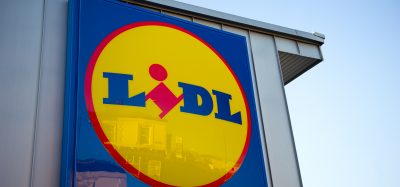Are food manufacturers being neglected by British government?
- Like
- Digg
- Del
- Tumblr
- VKontakte
- Buffer
- Love This
- Odnoklassniki
- Meneame
- Blogger
- Amazon
- Yahoo Mail
- Gmail
- AOL
- Newsvine
- HackerNews
- Evernote
- MySpace
- Mail.ru
- Viadeo
- Line
- Comments
- Yummly
- SMS
- Viber
- Telegram
- Subscribe
- Skype
- Facebook Messenger
- Kakao
- LiveJournal
- Yammer
- Edgar
- Fintel
- Mix
- Instapaper
- Copy Link
Posted: 19 June 2020 | Bethan Grylls (New Food) | No comments yet
New report says further support from the UK and devolved governments is vital to sustain manufacturers supplying the hospitality and food service market.


Food and drink suppliers to the hospitality and food service sector are at risk of being overlooked as the UK Government decides how to re-open the industry. This is the warning issued from more than 20 organisations from the farm-to-form supply chain and has been highlighted in a new report by the The Food and Drink Federation (FDF)-convened Food and Drink Industry Roundtable.
These businesses in the “squeezed middle” are not been given the same level of Government assistance as the businesses they supply, despite being hit just as hard by the overnight closure, according the report.
“Throughout the pandemic, the food and drink industry’s hidden heroes have been working hard to keep the country fed,” stated Ian Wright CBE, Chief Executive of the Food and Drink Federation. “But those companies who supply the food service and hospitality sectors have seen their business disappear overnight, and yet have not been afforded the same Government assistance.
“The hospitality and food service sectors will play a vital role in contributing to the UK’s economic recovery, but any restart with be stymied without further support for those food and drink manufacturers operating in the squeezed middle.”
Research undertaken for the report shows that fewer than half of food and drink manufacturers have applied for Coronavirus Business Interruption Loan Scheme (CBILS) or Bounce Back Loan Scheme (BBLS) support. Concerns over incurring additional debt and associated interest payments were cited as the main reason. At the same time, many companies are facing up to 50 percent of their customer base delaying payment or not paying outstanding invoices.
While the UK furlough scheme has been a welcomed relief for many businesses, there are fears over whether these sectors will be able to recover to viable levels come October when the scheme concludes. Concerns over the removal of support too early have also been expressed in the report, which questions whether it will pose serious risks to businesses and slow the UK’s economic recovery.
The British Government’s decision to underwrite Trade Credit Insurance was widely welcomed across the food and drink industry. However, businesses are said to be fearful that trade credit insurers are not making adjustments that consider the pandemic. This would place unrealistic demands on businesses and their debt management.
The report outlines a series of steps Government can introduce which aim to ensure the squeezed middle can play their role in a post-virus recovery. These include:
- Businesses supplying into the hospitality and food service industries should continue to receive furlough support through the UK Government at a rate of 80 percent of salary contribution until those markets return to commercially viable levels
- The UK Government should place a requirement on the trade credit insurance industry to develop best practice rules of operation which include greater transparency and formal notification of the reason(s) for refusal or withdrawal of cover
- Insurers should be required to reinstate reduced or withdrawn cover back dated to 1 March 2020, except where there are clear and identifiable reasons as to why this would no longer be appropriate
- Governments should provide more targeted support for the ‘squeezed middle’ that does not incur additional business debt eg, a relaxation of current rules for Apprenticeship Levy funds to allow businesses to maintain existing employment
- Governments should create schemes for small, medium and micro businesses within the ‘squeezed middle’ that provide initial cashflow injections to businesses requiring support to secure orders for materials and/or build stock in readiness for the recovery of customer demand.
Read the full report: Maintaining Post-Covid-19 Capacity in Hospitality and Food Service Supply Chain Businesses – ‘The Squeezed Middle’.







